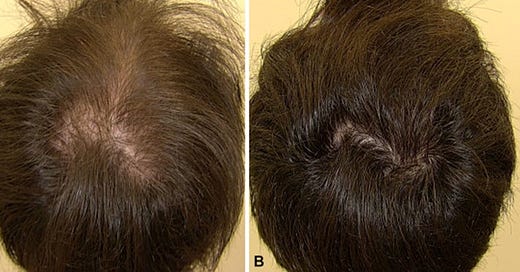Miraculous New Treatment for Hair Loss in Men and Women?
Off-label use of a risky blood pressure drug called minoxidil is growing.
Hair loss is a potentially troubling issue I encounter frequently in the office. It can be devastating, especially for young people and women. Some people can shrug it off, but for others it can degrade self-esteem, body image and self-confidence. Anxiety and depression may increase. If you are married to Will Smith, and another comedian takes a che…
Keep reading with a 7-day free trial
Subscribe to Examined to keep reading this post and get 7 days of free access to the full post archives.



